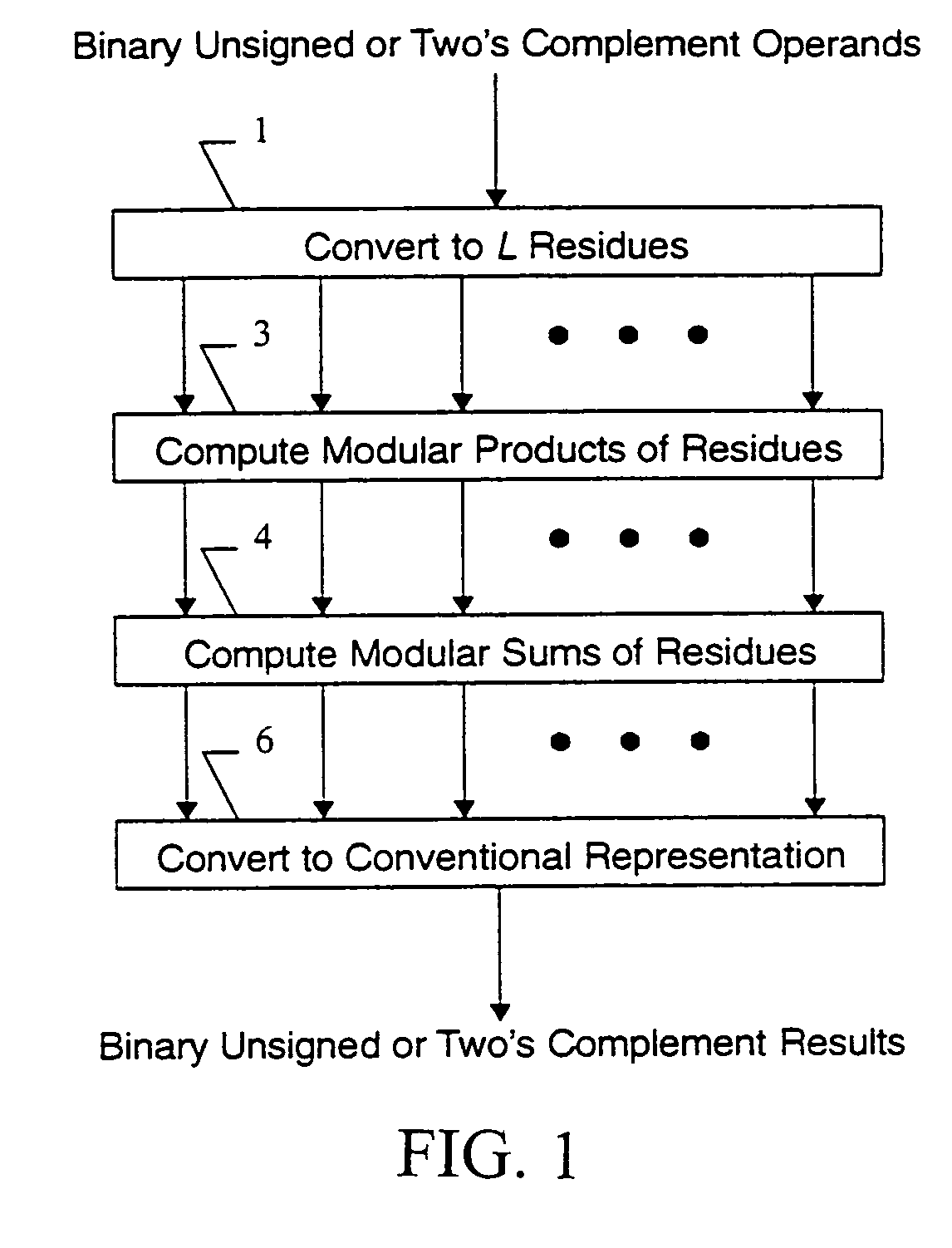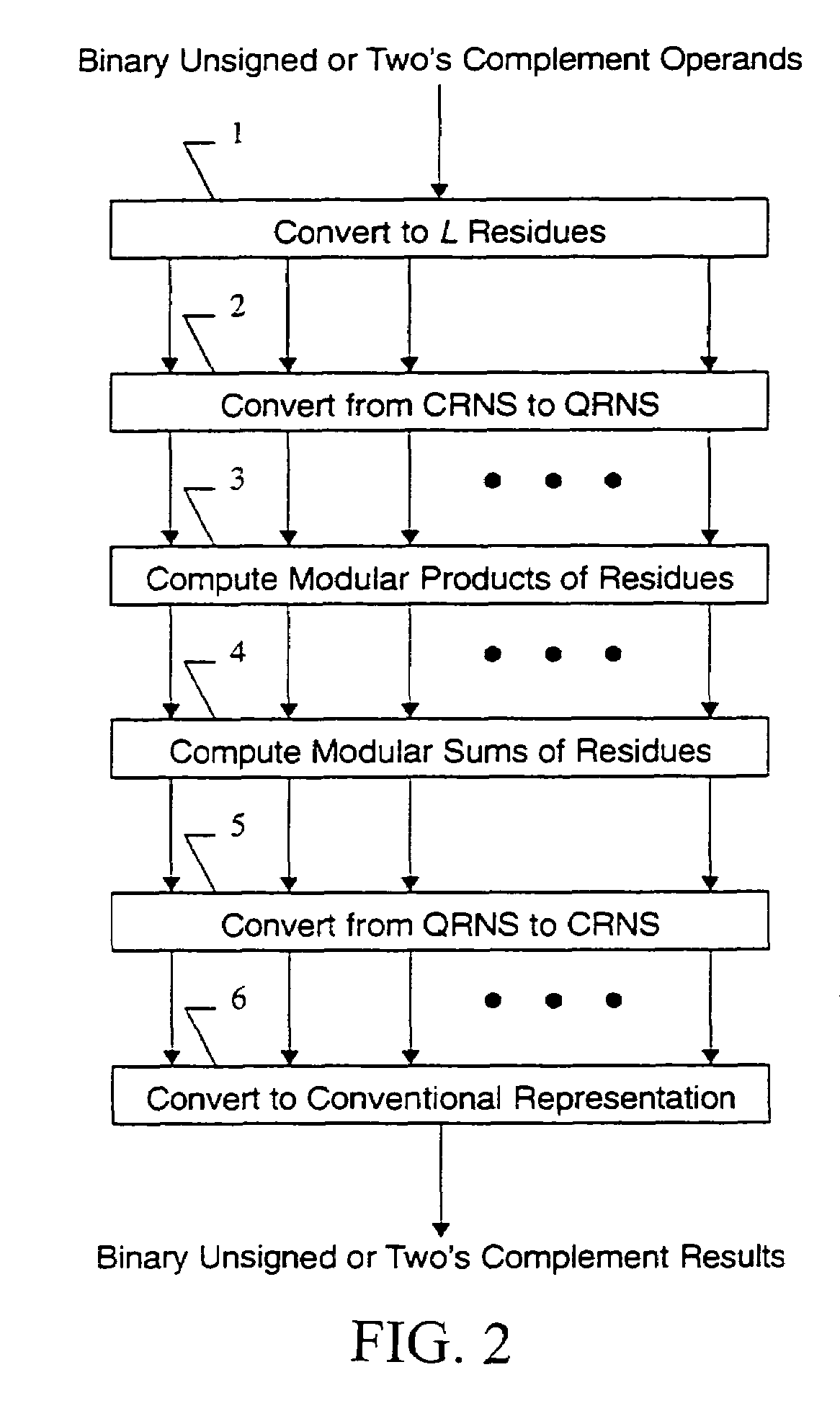Method and apparatus for performing computations using residue arithmetic
a technology of residue arithmetic and computation method, applied in computation using denominational number representation, instruments, computing, etc., can solve the problems of inability to fully understand the speed, area and power characteristics of prior computation techniques using rns, and the inability to implement large-scale digital signal processors using a single semiconductor device. , the effect of reducing the size or power
- Summary
- Abstract
- Description
- Claims
- Application Information
AI Technical Summary
Benefits of technology
Problems solved by technology
Method used
Image
Examples
Embodiment Construction
Enabling Mathematical Theory
[0026]The following subsections present the mathematics which are relevant to the operation of the invention. While the mathematics are well-known, the theory is presented here so as to provide a consistent framework of notation and symbols.
[0027]Let S={p0, p1, p2, . . . , PL−1}, where gcd(pi,pj)=1 for all i,jε{0, 1, 2, . . . , L−1} and i≠j, wherein gcd stands for greatest common denominator. Let M=πi=0L−1pi, and let XεZ / MZ, where Z denotes the ring of integers. By the Chinese Remainder Theorem, there exists an isomorphism
φ:Z / MZZ / p0Z×Z / p1Z×Z / p2Z× . . . ×Z / pL−1Z.
The mapping φ is given by
φ(X)→(x0, x1, x2, . . . , xL−1)
where (x0, x1, x2, . . . , xL−1)εZ / p0Z×Z / p1Z×Z / p2Z× . . . ×Z / pL−1Z, and xi≡X(mod pi) for all iε{0, 1, 2, . . . L−1}. The inverse mapping is given by
φ−1[x0, x1, x2, . . . , xL−1)]→X
where
[0028]X≡(∑i=0L-1mi〈mi-Ixi〉Pi)(modM),
mi=M / pi, mimi−1≡1(mod pi), and xp denotes the value in the set {0, 1, 2, . . . , p−1} ...
PUM
 Login to View More
Login to View More Abstract
Description
Claims
Application Information
 Login to View More
Login to View More - R&D
- Intellectual Property
- Life Sciences
- Materials
- Tech Scout
- Unparalleled Data Quality
- Higher Quality Content
- 60% Fewer Hallucinations
Browse by: Latest US Patents, China's latest patents, Technical Efficacy Thesaurus, Application Domain, Technology Topic, Popular Technical Reports.
© 2025 PatSnap. All rights reserved.Legal|Privacy policy|Modern Slavery Act Transparency Statement|Sitemap|About US| Contact US: help@patsnap.com



